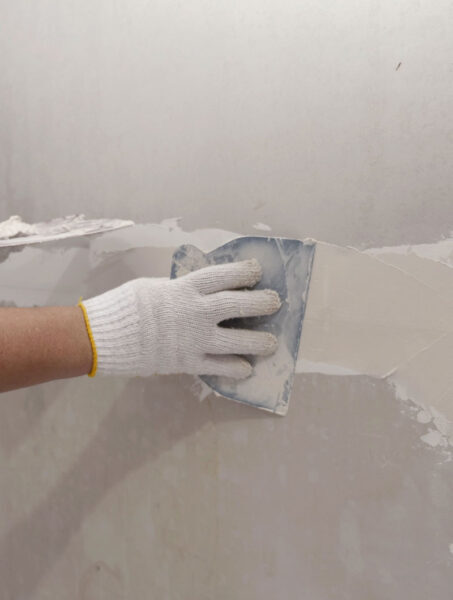Internal rendering is an essential part of many construction and renovation projects, offering both aesthetic appeal and functional benefits. This process involves applying a render, which is a mixture of cement, sand, and other materials, to interior walls to achieve a smooth or textured finish. Internal rendering provides a protective layer to the walls, enhances their appearance, and improves energy efficiency. In this guide, we will explore what internal rendering is, the different types available, the benefits, and how to ensure a successful rendering project.
What is Internal Rendering?
Internal rendering refers to the application of a render coat to the internal surfaces of a building. Unlike plastering, which often uses gypsum, rendering employs a mix of sand, cement, lime, and sometimes additional polymers. The result is a durable, decorative, and protective finish that can enhance the performance of the walls. Internal rendering is commonly used in both residential and commercial properties to provide a visually appealing and low-maintenance surface.
While external rendering focuses on protecting a building from weather conditions, internal rendering has other benefits, such as controlling humidity levels and reducing the need for frequent wall repairs. Depending on the chosen material and finish, it can also be a valuable part of modern design concepts or help restore traditional properties.
Types of Internal Rendering
There are several types of internal rendering available, each offering unique properties and finishes:
1. Cement Render:
Cement-based render is a popular option for its durability and affordability. It creates a smooth, strong surface but may require painting or additional finishes. Cement render is ideal for walls that need extra protection or where aesthetics are not the primary concern.
2. Lime Render:
Lime render offers breathability, which makes it suitable for older or heritage buildings where moisture control is essential. It has natural flexibility, preventing cracks from forming as the building settles or shifts. Lime render is also eco-friendly and can provide a traditional, rustic appearance.
3. Acrylic Render:
Acrylic render includes synthetic polymers, enhancing flexibility and resistance to cracks. It is applied as a topcoat over cement or lime render, offering a smooth, colored finish. This type of render is low-maintenance and works well for both contemporary designs and practical purposes.
4. Clay Render:
Clay render is an environmentally friendly option that provides good breathability and insulation. It is often used in eco-homes or projects focused on sustainability. However, clay render is less durable than other options, so it may require frequent maintenance.
Benefits of Internal Rendering
Internal rendering offers several advantages for homeowners, builders, and interior designers. Some of the key benefits include:
1. Improved Wall Strength and Durability:
Applying render to walls increases their structural integrity, making them more resistant to everyday wear and tear. Rendered walls are also better protected from cracks, dents, and other forms of damage, ensuring long-lasting performance.
2. Enhanced Aesthetics:
Internal render provides a visually appealing surface that can be left as-is for a minimalistic look or painted for added personalization. With a range of finishes available, including smooth, textured, or polished, it allows flexibility in design and complements various interior styles.
3. Moisture Control:
Some types of render, such as lime and clay, allow walls to breathe, preventing moisture build-up. This is particularly useful in older buildings where damp issues can be a common problem. By managing humidity levels, internal rendering reduces the risk of mould and mildew growth.
4. Energy Efficiency:
Internal rendering can improve thermal insulation, keeping rooms warmer in winter and cooler in summer. When combined with insulation boards or layers, it significantly enhances the energy efficiency of the building, reducing heating and cooling costs.
5. Noise Reduction:
Rendered walls can absorb sound, reducing noise transfer between rooms. This feature is especially valuable in apartments, office buildings, or homes where noise control is essential.
6. Low Maintenance:
Once applied and properly finished, internal render requires minimal maintenance. It offers a long-lasting surface that resists stains and dirt. Occasional cleaning and repainting are generally all that is needed to keep the walls in excellent condition.
Steps to Achieve a Successful Internal Rendering Project
Achieving a high-quality internal render involves careful planning, preparation, and execution. Follow these steps to ensure the best results:
1. Preparation of the Walls:
Start by cleaning the walls to remove dust, dirt, and any loose materials. Old wallpaper, paint, or plaster should be stripped away to ensure the render adheres properly. Any cracks or holes in the wall should be filled and leveled.
2. Application of a Bonding Agent:
A bonding agent may be needed on certain surfaces, such as smooth concrete, to help the render stick. The type of bonding agent will depend on the material being rendered, so it’s important to choose the right product for the job.
3. Mixing the Render:
The render mixture must be prepared according to the manufacturer’s instructions, ensuring the right ratio of cement, sand, and water. For lime or clay render, follow specific guidelines to achieve the desired consistency.
4. Applying the Base Coat:
The first coat, also known as the scratch coat, is applied to the wall to provide a strong base. This layer is usually roughened to help the second coat adhere. The base coat should be allowed to dry thoroughly before applying additional layers.
5. Applying the Finishing Coat:
The finishing coat determines the texture and appearance of the wall. Depending on the desired finish, this coat can be smoothed with a trowel or textured with a sponge. For colored finishes, acrylic render may be applied as the final layer.
6. Curing and Drying:
Rendered walls need time to cure and dry properly to achieve full strength. Avoid rushing this process, as it can lead to cracks or weak spots. Depending on the type of render used, curing can take several days to weeks.
7. Finishing Touches:
Once the render is dry, walls can be painted or decorated to match the interior design. Regular inspection and occasional cleaning will keep the walls in good condition for years to come.
Common Mistakes to Avoid
While internal rendering is a straightforward process, certain mistakes can compromise the quality of the finish. Avoid these common pitfalls:
1. Using the Wrong Render Type:
Selecting the wrong type of render for the building material or environment can lead to cracking and poor adhesion. Always choose the appropriate render for the specific project.
2. Applying Too Much Water:
Adding too much water to the render mix can weaken its strength and cause it to slump. Follow the recommended ratios for optimal performance.
3. Skipping the Bonding Agent:
Failing to apply a bonding agent on smooth surfaces can result in the render peeling off over time. Always prime the surface if needed.
4. Insufficient Curing:
Proper curing is essential for achieving a strong, durable finish. Avoid painting or decorating too soon after applying the render.
Conclusion
Internal rendering is an excellent solution for enhancing the durability, appearance, and functionality of interior walls. Whether used to modernize a space, restore a traditional property, or improve energy efficiency, it offers numerous benefits for homeowners and builders alike. With the right preparation, materials, and techniques, internal rendering can transform a space and add value to any property. Proper maintenance and careful attention to detail will ensure the rendered walls stay in top condition for years to come, providing both beauty and practicality.


